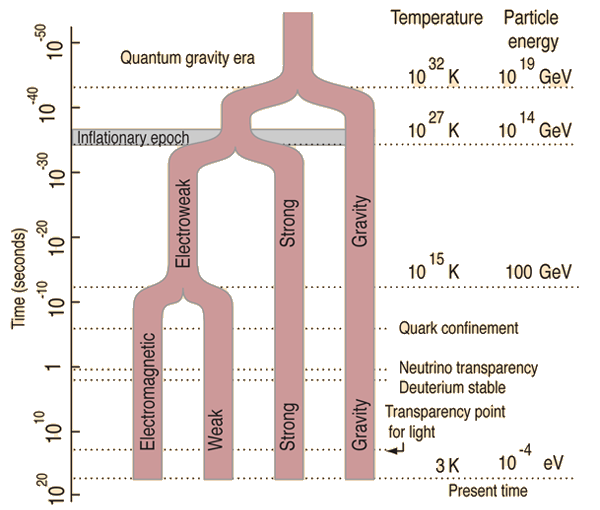Unification of Gravity
The final step of unification, past electroweak unification and grand unification, would be to add gravity to reach the final goal of one unified force. It has become popular to call such a unified theory a "theory of everything".

It seems fair to say that we are a long way from understanding quantum gravity. Whereas the electroweak unification and even the proposed grand unification seem to fit well into the standard model of quarks and leptons, quantum gravity definitely does not. To unify gravity, you would have to be able to convert bosons to fermions and vice versa. You don't have the nice matchup of leptons and quarks that you had in the previous steps, and this seems to call for a new class of particles.
Thoughts about a new set of particles have been collected under the title "supersymmetry". It would appear that you would have to have supersymmetric boson particles for all the fermions and supersymmetric fermion particles for all the bosons. This has led to a new set of names:
- supersymmetric quarks .......... squarks
- supersymmetric leptons ..........sleptons
- supersymmetric photons .........photinos
- supersymmetric gravitons ........gravitinos
- supersymmetric gluons .......... gluinos
- supersymmetric W's ...............winos
- supersymmetric Z's ................zinos
| Einstein's attempts to find a unified field theory |
| HyperPhysics***** Quantum Physics | R Nave |